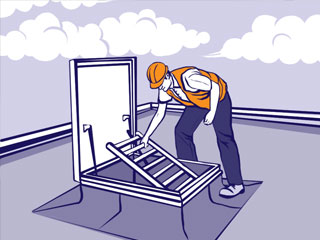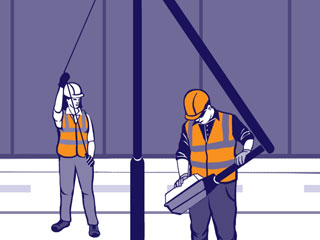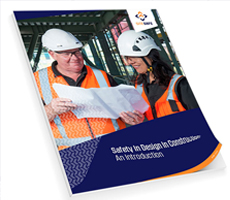By Bill O’Byrne for Site Safe NZ
Sometimes, getting a building’s design wrong merely amounts to a bit of inconvenience for someone, like the electrician who must do advanced yoga to work on a tightly placed switchboard. However, at other times, it can be a real matter of life and death.
The Safety in Design in Construction guide from Site Safe has been written to help designers put safety at the heart of their projects. Focusing strongly on the construction industry, the guide combines practical advice along with a solid theoretical basis to the practice of safe design.
Site Safe chief executive Brett Murray says the concept of safety in design has become increasingly important in the last ten years, particularly since the introduction of the Health and Safety at Work Act 2015. “We now have to give thought to people working in a built-up environment and how those people interact with plant and machinery.”
Mr Murray says he’s seen too many examples where poorly thought-out designs lead directly to injuries or deaths. “For instance, many of Wellington’s buildings now require the use of abseilers to wash windows, but the lack of thought in the design of some buildings is a problem. The problem was highlighted when an abseiler fell after an anchor screw popped out of the building.”
 It isn’t just life-threatening situations where smart planning and design can help. “Good design means things like not installing circuit boards in tight spaces so that when electricians are performance maintenance, making the boards difficult to access.”
It isn’t just life-threatening situations where smart planning and design can help. “Good design means things like not installing circuit boards in tight spaces so that when electricians are performance maintenance, making the boards difficult to access.”
Blake Kyle, a research and technical advisor at Site Safe, says the guide has been developed and reviewed by industry experts to make sure it offers practical advice. The guide also takes a philosophical look at where design fits into safety. “The information now available around safety in design has been broadened to include the concept of Whole Life Project Costs. These include consideration of all costs involved in a project from conception, planning, tendering, construction, maintenance, use and right through to demolition.”
For designers, this helps them meet their legal duties as a Person Conducting a Business or Undertaking (PCBU) to ensure - so far as is reasonably practicable - a project design eliminates risks to the health and safety of construction workers, users, maintenance workers and others.
Chartered civil engineer Jeremy Eldridge got involved in the Safety in Design project through his links to Constructing Excellence in New Zealand. Over several decades working in New Zealand and internationally, he has seen the growing importance of embedding health and safety into the design of projects. “This is a useful document for designers, incorporating the collected views and comments of many people – it’s valuable to bring a consistency of approach to safety in design across New Zealand.”
Mr Eldridge says safety in design is a crucial part of the training as a professional engineer in the United Kingdom. It developed through the 1980s in response to a series of significant failures such as the 1984 Abbeystead disaster in England where natural methane gas entered a water transfer tunnel and collected in an underground discharge station. A tour group of 44 was in the station when the methane ignited killing 16 and injuring 22. The provision of permanent, natural ventilation would have prevented this. 
He says designers must develop designs that break the sequence of potential cascade failures. “The Safety in Design document has a clear diagram of the ‘bow-tie’ analysis [on page 13 of the guide] which assists in identifying how and where appropriate breaks can be incorporated into a design to forestall the consequences of things going wrong.” He says the duties and liabilities placed on designers by the Health and Safety at Work Act 2015 is driving change to the training of professional engineers. “This guide provides clear, philosophical guidance on what you should be looking at and why.”
Another fan of the document is Dunedin architectural designer Reece Warnock, a director on the board for Architectural Designers New Zealand (ADNZ) which helped review the publication. “It has a useful, step by step process as to how we should be doing our risk assessment and what we should be doing while designing,” Mr Warnock says. 
“Apart from being a good document, it is a good reminder to everyone in the trade what our responsibilities are”.
He says safety in a design goal should focus on the places where designers can make the most difference to the outcome over the whole life of a project. “The document expresses this very nicely; I think that came through quite strongly.”
Site Safe would like to thank the many people who contributed to the creation of the publication. These include;
- Marcellus Lilley of Studio Pacific Architecture
- Chloe Stewart-Tyson and Ian Fenemore of Beca
- Nathan Moher of ADNZ
- Kirsty Allen of WorkSafe
- Adam Thorndon of Dunning Thornton Consultants.
Site Safe’s Safety in Design guide is available for free download here